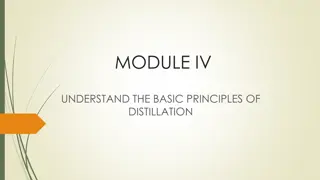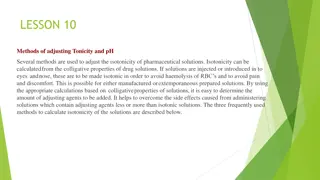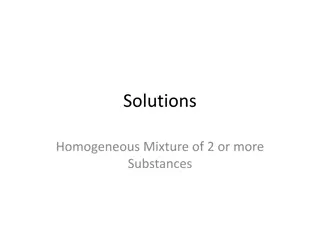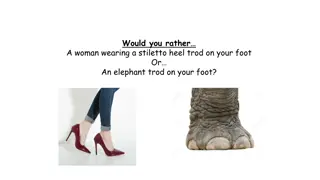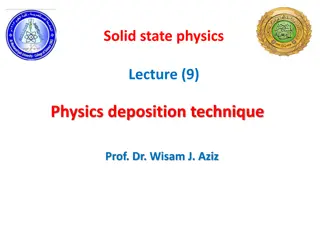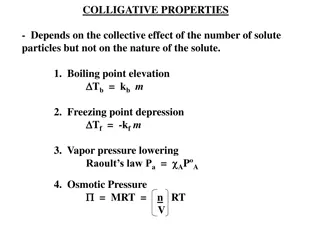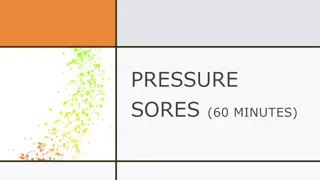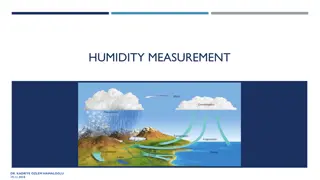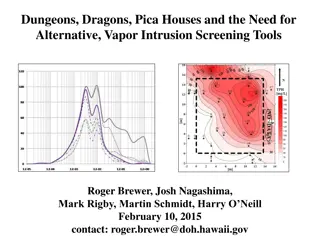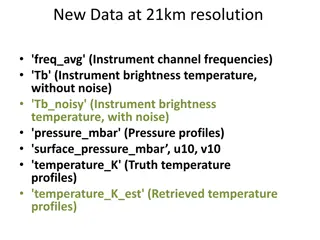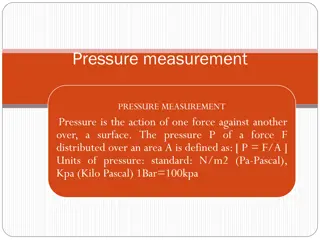Understanding Colligative Properties and Vapor Pressure in Solutions
Colligative properties are solution properties dependent only on solute concentration, not solute identity. The Van't Hoff factor helps in such equations, especially for ionic compounds. Vapor pressure lowering is a key colligative property where a solute decreases vapor pressure. Raoult's Law explains vapor pressure above a solution. A problem and its solution involving benzene and toluene illustrate these concepts, emphasizing the importance of vapor composition in mixture separation using fractional distillation.
Uploaded on Nov 15, 2024 | 0 Views
Download Presentation

Please find below an Image/Link to download the presentation.
The content on the website is provided AS IS for your information and personal use only. It may not be sold, licensed, or shared on other websites without obtaining consent from the author. Download presentation by click this link. If you encounter any issues during the download, it is possible that the publisher has removed the file from their server.
E N D
Presentation Transcript
Colligative properties There are properties of a solution that don t depend on the identify of a solute, only the concentration of the solute. The Van t Hoff factor (i) is commonly used in these equations because ionic compounds have their concentration increased by a factor of how many ions it dissociates into.
Vapor Pressure Vapor pressure lowering is another colligative property. Vapor pressure, the amount of a liquid that will evaporate above a liquid, will be lower if anything is dissolved in it. If you have a mixture of two volatile liquids, the one with a higher normal vapor pressure will evaporate at a higher rate.
Raoults Law Raoult s law is an equation to determine the vapor pressure above a solution PA = PoA Ai PA is the observed vapor pressure above the solution PoAis the normal vapor pressure of the solvent Ais the mole fraction of the solution i is the Van t Hoff Factor
Problem A pure sample of benzene has a vapor pressure of 10.0 kPa, and a pure sample of toluene has a vapor pressure of 2.9 kPa at a certain temperature. Calculate the vapor pressure of each, and the total vapor pressure in a mixture that is .70 mol benzene and .30 mol toluene. -Both have a Van t Hoff factor of 1 since neither are ionic.
Answer Benzene PA = PoA A Pbenzene= 10.0 kPa (.70) = 7.0 kPa Toluene PA = PoA A Ptoluene= 2.9 kPa (.30) = .87 kPa Total vapor pressure P = 7.0 kPa + .87 kPa = 7.9 kPa
Important to note The previous solution was 70% benzene, however the vapors above the solution were 89% benzene (7.0 kPa / 7.9 kPa). This can be used to make it easier to separate the mixture.
Fractional distallation Fractional distillation makes use of vapor pressure lowering. Fractional distillation is used to separate petroleum or crude oil. Petroleum is a mixture of volatile liquids. The vapors above will be much more pure than the solution because the most volatile will lower the amount of other substances that can evaporate
Fractional distillation There is a large column on top of a standard distillation set up, that is meant to distill the vapors. As they get further from the flame, the temperature decreases, so at each level different things may condense out. In the case of the distillation of crude oil, the tower is hundreds of feet high.
Change in vapor pressure Sometimes, it useful to look at the change in vapor pressure for substance. In which case you would use the normal vapor pressure for the substance and mole fraction of the solute. PA = PoA B
Osmosis Diffusion of a solvent across a semipermeable membrane. A semipermeable membrane is a substance with pores small enough to allow solvent particles through, but not solute particles. Examples of a semipermeable membrane would be an animal bladder or cellophane. The solvent will move to equalize the pressure on either side of the membrane.
Osmotic Pressure Osmotic pressure is a colligative property of a solution, it is the pressure that must be applied to a solution to stop osmosis. = iMRT osmotic pressure i Van t Hoff factor M concentration in molarity R Ideal gas constant T temperature
Osmosis is important to living things A cell is an aqueous solution surrounding by a semipermeable membrane. The surrounding solution must have an osmotic pressure close to that of the cell, otherwise water will enter or leave the cell. This could cause the cell to shrivel up or burst.
Reverse Osmosis Reverse osmosis is used to purify water. A pump is used to pressurize a solution on one side of a semipermeable membrane. The pressure is greater than that of the osmotic pressure. This forces the solvent across the membrane. This is one method of desalinating (removing salt) water supplies.
Reverse Osmosis water dispenser at Mustard Seed
Chromatography Separating a solution by capillary action ~the attraction of a liquid to the surface of a solid, why water climbs up things For a simple chromatography place ink on chromatography paper and place the paper in a solvent with the ink above the water line. The solvent will climb up and separate the ink
Chromatography In chromatography, a mobile phase carries something through a stationary phase. If different constituents have move at different speeds the material will be separated In simple paper chromatography the water is the mobile phase, the paper is the stationary phase.
RfFactor Rfvalue is determined by taking the ratio of distance the substance has traveled compared to the distance the solvent has traveled. This Rffactor is compared to a known sample and used to identify unknowns.
Other types of chromatography Gas chromatography TLC, thin layer chromatography Column Chromatography HPLC, high performance liquid chromatography



